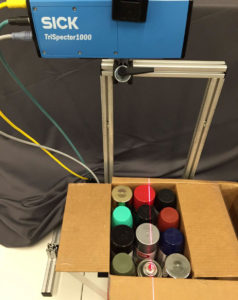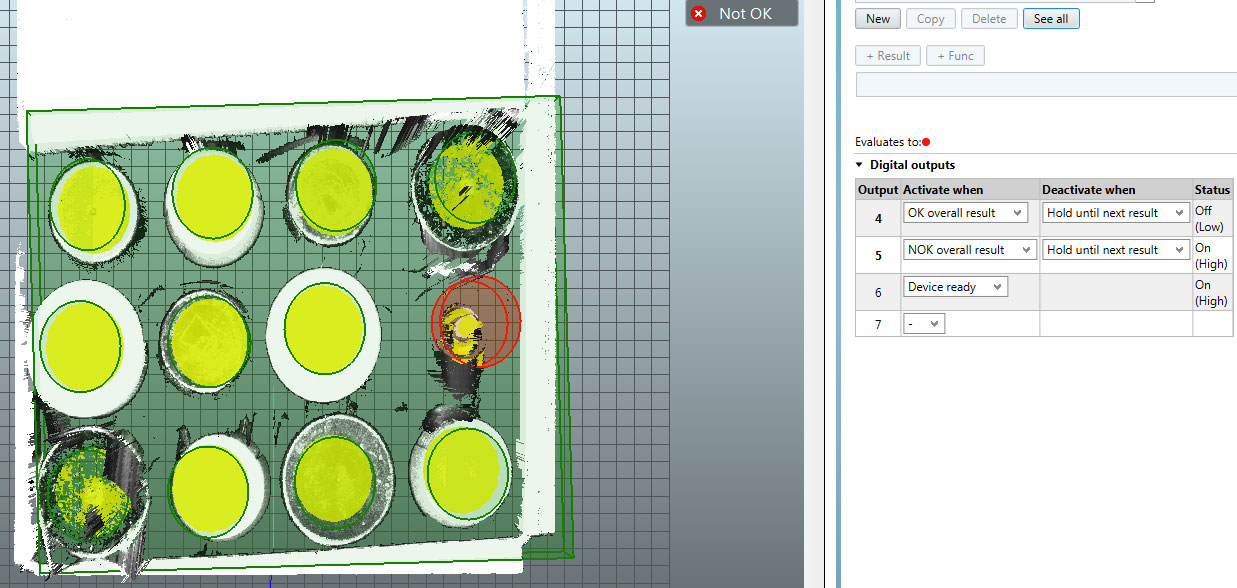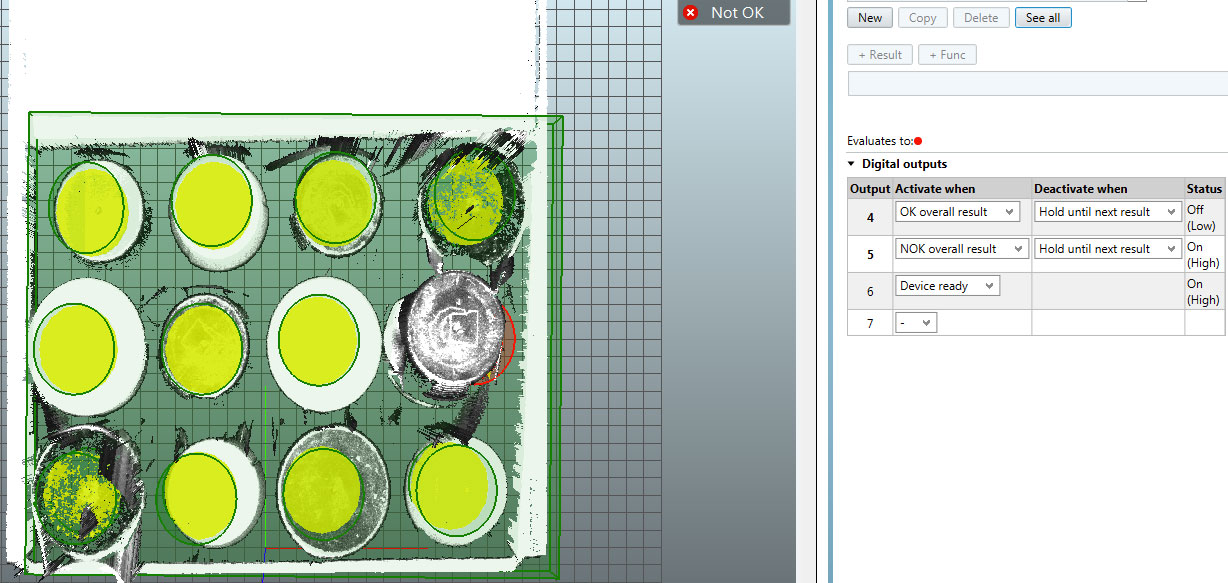This is a guest post by BG Technologies an authorized SICK distributor covering Central and South Texas. BG specializes in automation using sensors, scanners, safety devices, encoders, and motor control.
***
The Problem
Quality assurance for spray paint cans can be a challenge. For example, when checking for case completeness, the presence of different colors can be difficult to detect reliably at the same time. Because spray paint manufacturers produce such a wide spectrum of colors, one of BG’s customers recently had over 50 configurations for their existing solution utilizing 2D cameras. In addition, the 2D cameras struggled to reliably detect mirror-like metallic colors.
This same customer also faced the challenge of caps coming off the spray paint cans and landing in a subsequent empty case down the line, leading to numerous quality control and productivity issues. For one, the missing caps inevitably led to messy paint spills and an incomplete product.
In addition, paint cans would then be placed on top of the caps that had landed in the empty cases, causing problematic overheight when the case went through packaging. The customer’s existing system could not detect overheight cans at all, nor could it reliably detect whether caps were present.
The Solution
BG Technologies worked with the customer to test a 3D camera (just one device per line) to solve all three major quality concerns: case completeness, missing caps, and overheight.
 Using the TriSpector1000 the customer was able to accurately count the number of cans in each case regardless of color (including metallic colors), and also make sure that they were all the right height and had not lost their caps to make sure a 3D camera ensures quality.
Using the TriSpector1000 the customer was able to accurately count the number of cans in each case regardless of color (including metallic colors), and also make sure that they were all the right height and had not lost their caps to make sure a 3D camera ensures quality.
The TriSpector1000 was configured using one “Area” tool for each position of cans in the box. A result of Pass or Fail is determined by the percentage of the area that has height data. The only additional configurations needed would be for different size cases.
Results
Below are several images that illustrate the results that the TriSpector1000 was able to achieve.
The first image shows a passing result. Of the 12 cans present, there are 10 different colors. Note that the metallic cans in the upper right and lower left corners are still being detected in spite of the limited amount of light returned to the camera.
The next image shows a failing result. One of the cans does not have a cap and therefore not a high enough percentage of height data to meet predefined conditions.
Finally, the last image shows a failing result due to a can that is elevated (due to a loose cap located beneath it in the box). Therefore, there is not a high enough percentage of height data to meet predefined conditions.
With the TriSpector1000, the customer was able to check for 1) case completeness, 2) missing caps, and 3) overheight…all with a single camera per line. In addition, the customer can program the camera themselves, saving on integration costs as well. Overall, it's safe to say installing a 3D camera ensures quality for this customer.








